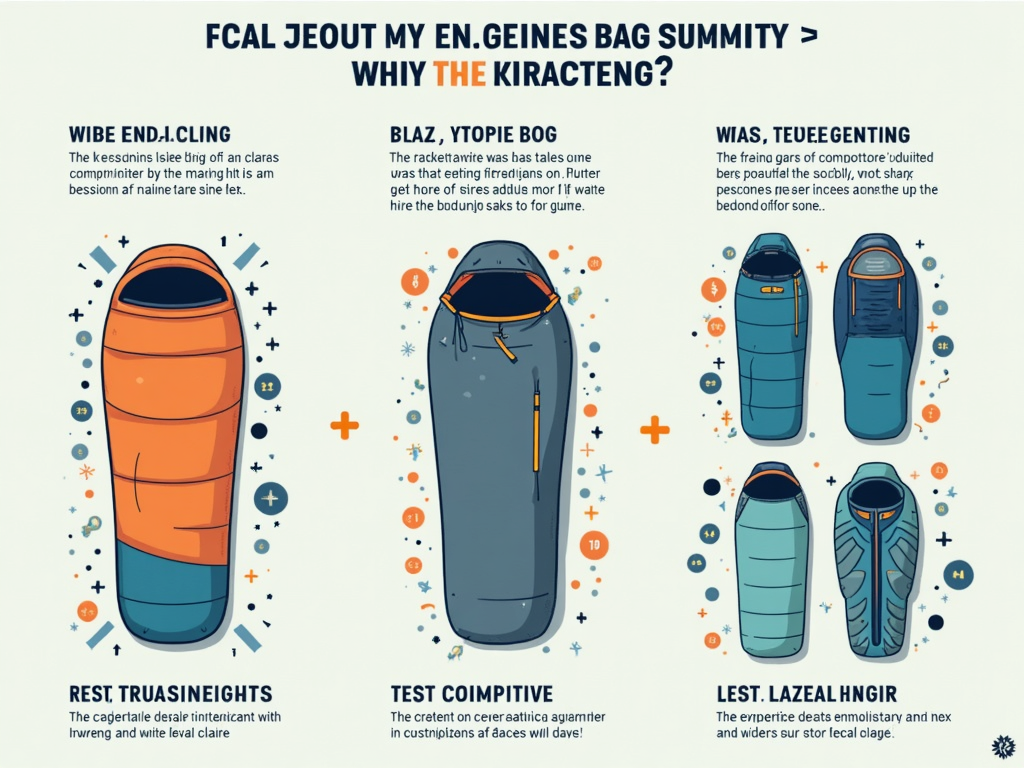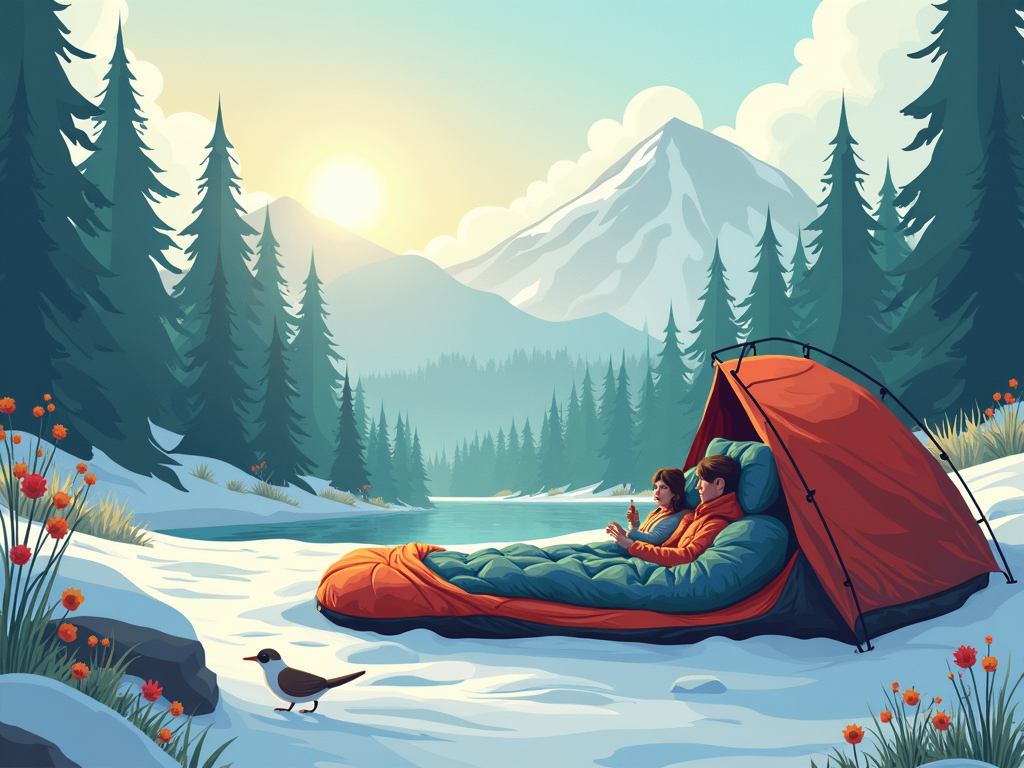Here’s something Big Agnes won’t tell you: that ‘ultralight’ summer sleeping bag in your pack? It’s probably overkill for 90% of your trips.
I’ve watched countless hikers haul around $300 sleeping bags rated for 40 degrees when they’re camping in 65-degree weather. It’s like wearing a parka in July.

Dave Collins from CleverHiker figured this out the hard way during his Enchantment Lakes trek—even his sub-2-pound REI Magma Trail Quilt was too warm most nights.
The outdoor industry has convinced us we need specialized gear for every season, but experienced ultralighters know better. They’re ditching traditional summer bags entirely, saving pounds and hundreds of dollars in the process.
This isn’t about suffering through cold nights or cutting corners on safety. It’s about understanding what you actually need versus what REI’s quarterly earnings report wants you to buy.
The Summer Sleeping Bag Myth: When Traditional Bags Become Dead Weight
Most sleeping bag reviews start with temperature ratings. Let’s start with reality instead: the average summer night in popular camping spots like Yosemite, the Smokies, or Colorado’s Front Range rarely drops below 60°F.
Yet there you are, sweating in a 40-degree mummy bag because some website said it was ‘ideal for summer.’
The math doesn’t add up.
Dave Collins discovered this during extensive field testing of the REI Magma Trail Quilt 30 across Washington’s Enchantment Lakes. Even this ultralight champion—weighing less than 2 pounds—was overkill most nights. He spent more time using it as a blanket than actually zipped up.
That’s a $350 blanket, folks.
The problem runs deeper than just temperature. Traditional sleeping bags trap humidity like a greenhouse. Your body releases about a pint of moisture each night through breathing and perspiration. In a sealed bag during summer, that moisture has nowhere to go.

You wake up clammy, uncomfortable, and wondering why you bothered bringing the thing at all.
Big Agnes tried to solve this with their Torchlight UL 20’s ventilation features. Sure, the water-resistant down and quick-drying shell help. But you know what helps more? Not being wrapped in a sleeping bag when it’s 70 degrees outside.
The outdoor industry has created this weird mythology around ‘proper’ camping gear. As if you’ll spontaneously combust without a dedicated summer sleeping bag.
Meanwhile, ultralight backpackers are out there crushing 30-mile days with nothing but a silk liner and a puffy jacket. They’re not tougher than you—they just stopped believing the hype.
The Ultralight Alternative: Quilts, Liners, and Hybrid Systems That Actually Work
The dirty secret of summer backpacking? A $30 silk liner often beats a $300 sleeping bag.
I’m not kidding.
Sea to Summit’s Premium Silk Liner weighs 4.6 ounces. That’s lighter than your phone. Above 65°F, it’s all most people need. Add a puffy jacket for your core and you’re golden down to 55°F.
But let’s talk quilts—the gateway drug to ultralight enlightenment.
The updated REI Magma 30 Down Trail Quilt packs over an ounce of extra down fill compared to last year’s model. Still under 2 pounds. No back insulation you’ll compress anyway. No zipper to break or snag. Just warmth where you need it.
CleverHiker’s testing revealed something crucial: quilts excel precisely because of what they lack. No hood (use a beanie). No bottom (your sleeping pad handles that). No claustrophobic mummy shape.
You can vent heat instantly by lifting an edge. Try that with a traditional bag—you’ll wake up your tent mate wrestling with zippers.
Then there’s the nuclear option: hybrid systems.
Nemo Equipment’s latest designs incorporate mesh panels and targeted insulation zones. Sounds fancy, right? Here’s what it actually means: they finally admitted summer bags don’t need insulation everywhere.
The Icefall Pro 900 takes a different approach with synthetic MicroThermo Ball fill. Yeah, it’s heavier than down. But for humid East Coast summers? That moisture resistance matters more than saving 4 ounces. Field testing shows it maintains loft even when damp—something your precious 900-fill down can’t claim.
Some ultralighters go even more minimal. A SOL emergency bivy (3.8 ounces) plus a fleece blanket. Total weight: under a pound.
Is it as comfortable as a traditional setup? No. Will it work for most summer conditions? Absolutely.
The Real Beauty of These Systems
The best part about these alternatives? Versatility.
That silk liner becomes your hostel sleep sack. The quilt works as a camp blanket. The emergency bivy could save your life in unexpected weather.
Try getting that flexibility from a mummy bag.
The Temperature Rating Trap: Why 40-Degree Bags Fail in Real Summer Conditions
Temperature ratings are lies.
Well, half-truths.
That 40-degree rating on your summer bag? It assumes you’re wearing base layers, sleeping on a decent pad, in zero humidity, with no wind. Oh, and that you sleep cold like the underfed college student they used for testing.
Real-world conditions laugh at these ratings.
Take the Big Agnes Torchlight UL 20. Fantastic bag—water-resistant down, clever ventilation, weighs 2 pounds 11 ounces. But that 20-degree rating? Users report using it unzipped as a blanket most summer nights.
That’s a $370 blanket with features you’ll never use.
What Manufacturers Won’t Tell You
Here’s the thing: EN/ISO testing happens in climate-controlled chambers. Your campsite isn’t climate-controlled.
That 40-degree bag becomes a sauna when humidity hits 80%. Factor in your tent’s greenhouse effect and you’re looking at perceived temperatures 10-15 degrees higher than the forecast.
Location matters more than ratings. Camping in the desert? Temperature swings of 40 degrees aren’t unusual. You might actually need that bag.
But the Appalachian Trail in July? The Sierras in August? Most nights won’t drop below 60°F.
Weather.gov’s historical data proves it—pull up the numbers for your favorite spots.
Personal physiology destroys rating accuracy too. Women typically sleep colder than men. Fit hikers generate more body heat than weekend warriors. That freeze-dried dinner affects your metabolism. Your tent mate’s body heat changes everything.
One-size-fits-all ratings can’t account for these variables.
The solution isn’t buying multiple bags for slightly different conditions. It’s building a modular system. Start minimal and add layers if needed.
A silk liner plus puffy jacket handles 90% of summer situations. Colder than expected? Add your rain gear. Still cold? Maybe you picked the wrong season for that altitude.
Smart ultralighters check historical lows, not manufacturer ratings. They know August in Yosemite Valley averages 50°F minimum—perfect for a lightweight quilt. They also know October in the same spot can hit freezing.
The bag doesn’t change; the decision-making does.
Making the Switch: Your Framework for Ditching Dead Weight
Alright, you’re sold. But how do you actually transition from traditional bags to smart systems?
First, stop thinking about “ideal sleeping bags for summer camping.” Start thinking about sleep systems.
Here’s what works:
- For nights above 65°F: Silk liner only. Maybe a light fleece if you run cold. Total weight: under 8 ounces.
- For 50-65°F nights: Silk liner + puffy jacket + long underwear. Or a lightweight quilt like the REI Magma Trail. Weight: 1-2 pounds max.
- For variable conditions: Modular quilt system. Add a synthetic overquilt for moisture protection. Swap components based on forecast.
The transition feels weird at first. You’ll pack that heavy bag “just in case” for a trip or two. That’s normal. Your brain needs deprogramming after years of gear marketing.
But once you sleep comfortably in just a liner on a 70-degree night? Once you realize how fast quilts pack compared to mummy bags? Once your base weight drops by 2 pounds?
You’ll never go back.
The Money Math
Traditional summer setup:
- “Lightweight” 40-degree bag: $300-400
- Compressed size: 6-8 liters
- Weight: 2-3 pounds
- Versatility: Zero
Ultralight system:
- Silk liner: $30-60
- Used down quilt: $150-250
- Total weight: Under 2 pounds
- Versatility: Use pieces separately or together
You save money AND weight. When does that ever happen in outdoor gear?
The Summer Sleeping Revolution Nobody’s Talking About
The outdoor industry wants you to believe summer camping requires specialized gear for every possible scenario.
They’re wrong.
Dave Collins proved it in the Enchantments. Thousands of ultralight hikers prove it every season. You don’t need a dedicated summer sleeping bag—you need a smart, adaptable system.
Start by checking real temperature data for your destinations. Build from minimal (silk liner) up, not maximum (traditional bag) down.
That REI Magma Trail Quilt everyone raves about? Great piece of gear. But so is a $30 liner when conditions allow it.
The transformation happens when you stop asking “What sleeping bag should I buy?” and start asking “What do I actually need for these specific conditions?”
Your back will thank you. Your wallet will thank you. And you’ll wonder why you ever carried 3 pounds of insurance for weather that never happened.
Next time you’re gear shopping, resist the urge to buy safety through equipment. Buy knowledge instead.
The lightest gear is the stuff you leave at home.